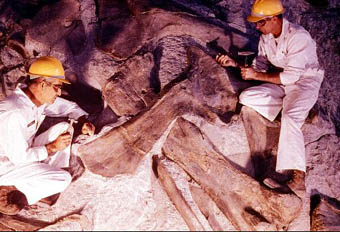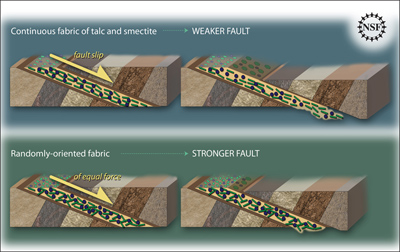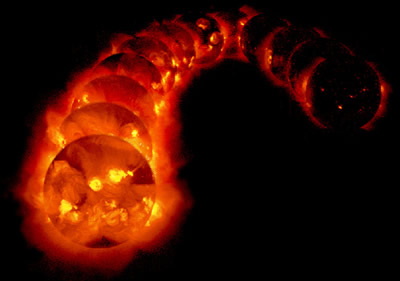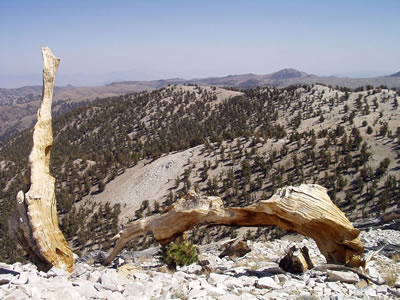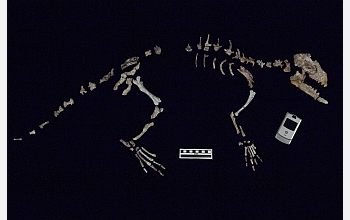
Credit: NEOUCOM
Finding the Four-Footed Ancestors of Whales
News story originally written on December 20, 2007
Scientists have known for a long time that whales, the largest marine mammals, have distant relatives that lived on land millions of years ago. Little was known about whales’ land-loving ancestors until a team of scientists led by Hans Thewissen of the Northeastern Ohio Universities Colleges of Medicine and Pharmacy (NEOUCOM) started searching for fossil evidence to better understand how whales evolved. In the past 15 years, the research team has identified fossils of extinct whale ancestors that show how over millions of years these mammals evolved from small four-footed land animals to extra-large marine animals.
Now Thewissen and his team have discovered the closest known fossil relative of whales that lived on land. Named Indohyus, this extinct species lived approximately 48 million years ago in what is now the Kashmir region of India. Thewissen's team studied hundreds of fossil bones of Indohyus. They have found similarities between whales and Indohyus in the skull and ear that show their close family relationship.
It may have lived on land, but there is fossil evidence that Indohyus spent much of its time in the water. A fox-sized mammal that looked something like a miniature deer, Indohyus had bones with a thick outside layer, much thicker than in other mammals this size. This characteristic is often seen in mammals that wade slowly in shallow water, such as the hippopotamus today. And the chemical composition of their teeth is similar to aquatic animals.
"The evolution of whales is a tale of the adaptation of a land-based mammal to increasingly aquatic environments," said H. Richard Lane, program director in NSF's Division of Earth Sciences. "This recent discovery provides us with a new understanding of this near-shore-dwelling, shallow-water ancestor."






